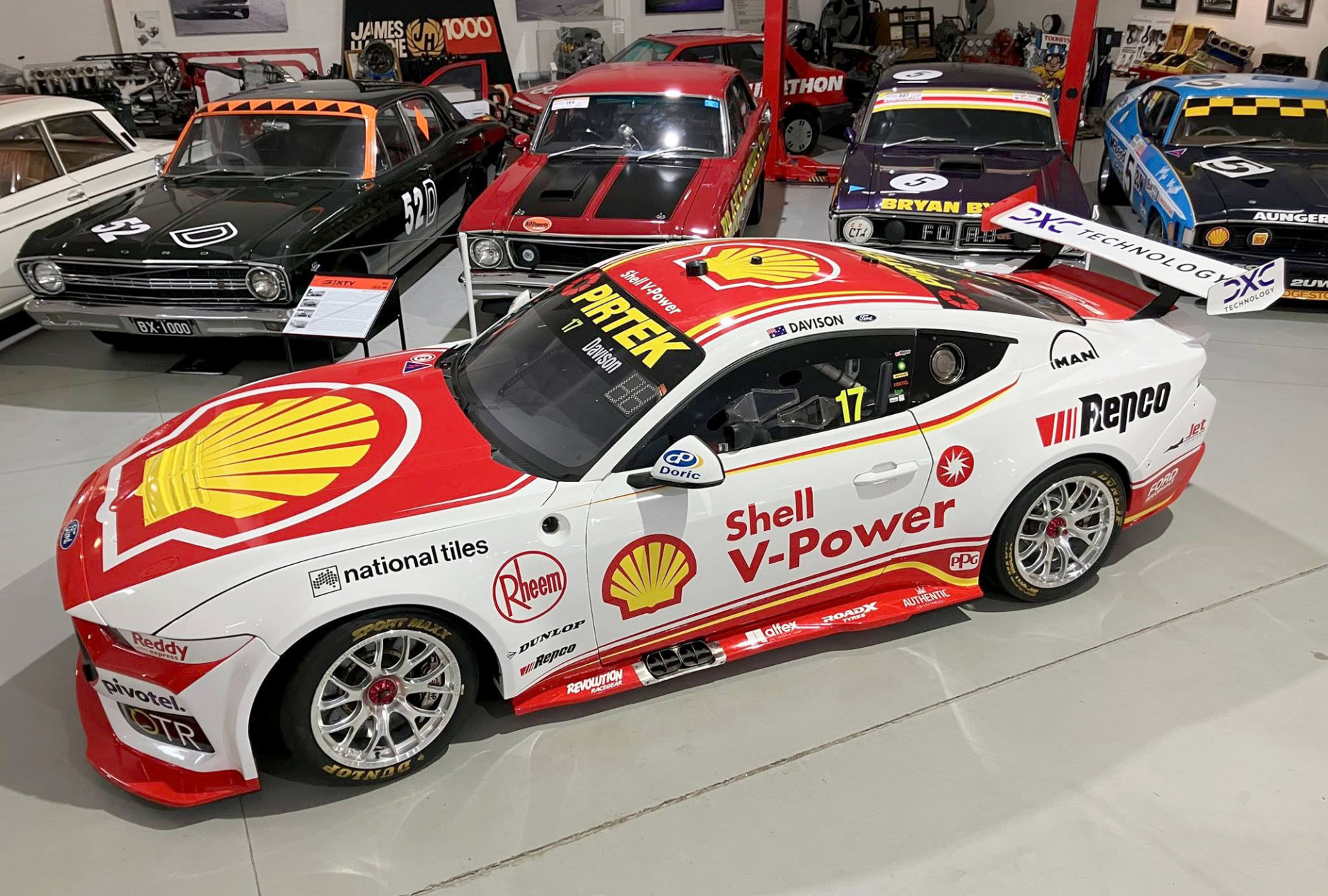
A decision last week to revert to a spare Ford Mustang for the Bathurst 1000 necessitated an emergency recall from Bathurst’s National Motor Racing Museum.
The team’s spare car had been on display in the Welcome Centre at The Bend 500 before it was taken to Bathurst by Supercars for use on the event’s TV broadcast.
It was placed in the museum adjacent to the circuit to gain exposure as an exhibit in the lead-up to the October 12-14 race, before the sudden decision to recall it only days after arrival.
The car returned to DJR headquarters in Stapylton, Queensland, this afternoon following a 1000km journey on a flatbed truck with Brad Moras from Bathurst Towing at the wheel.
Moras, who is the part of the Supercars trackside recovery team at events, will also ferry another spare DJR Mustang back to fill the space at the museum.

Needing to raid the Bathurst museum for a spare car just weeks out from the Great Race is the sort of tale that perhaps could only come from a team built on such folklore.
Read More
It’s believed the decision came at the request of Davison following a series of struggles since switching to the new machine ahead of the Perth round back in May.
Davison and D’Alberto finished a miserable 21st in the AirTouch 500 at The Bend, almost 90 seconds from their victorious teammates Brodie Kostecki and Todd Hazelwood.
Lap time data from The Bend showed Davison’s race pace to be slower not only than Kostecki, but Hazelwood too.
Officially, the team is saying little about the switch.
“Moving back to the chassis that Will drove earlier in the year allows the team the opportunity to assess our performance, leaving no stone unturned to maximise our #17 Shell V-Power Mustang’s output at Bathurst,” it said in a statement.
The decision is particularly notable given the now-parked Davison machine was built using a chassis supplied by Erebus Motorsport.
Kostecki began this season with an Erebus-built chassis, while Davison contested the opening rounds with a new Pace Innovations-based machine.
That delay was due to a Supercars technical inspection which resulted in Davison’s Erebus-supplied chassis making a return trip to its builder in Mount Gambier for modifications.
DJR’s move to purchase Erebus-built chassis triggered widespread debate about whether allowing different builders for the control chassis opened-up a performance advantage.
While DJR adopted Erebus chassis at the insistence of Kostecki and engineer George Commins, the driver today batted away any concerns about Davison’s switch.

“They’re all the same,” Kostecki told Speedcafe when asked of the prospect of the two-car team tackling the Great Race with one Erebus chassis and one Pace chassis.
“For me I’m pretty mechanically minded and understand how to put one of these cars together, pretty much every nut and bolt.
“For me there’s no difference between cars. It’s not really a big deal for me and it’s not really a big deal for Davo as well.”
Davison’s is the latest in a series of driver-requested chassis switches with the Gen3 cars.
Other examples include Tickford Racing’s Cam Waters and Matt Stone Racing’s Nick Percat opting for change following tough opening rounds in 2024 and ’25 respectively.
In each case teams have committed to making a change based on driver feedback, without having found a specific issue.
“I know sometimes these cars were designed to be cheaper and easier to maintain,” added Kostecki of Davison’s situation.
“With how things have played out, I guess these things are hard to maintain at times, so maybe that’s got something to do with it, but not really quite sure.”
DJR currently has five Gen3 cars in its fleet and is soon set to receive another Erebus-built chassis from the Blanchard Racing Team.
That follows Erebus’ decision to shut down its customer program.

